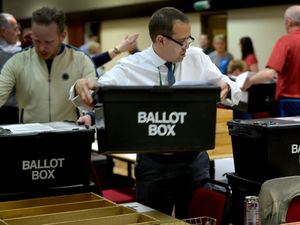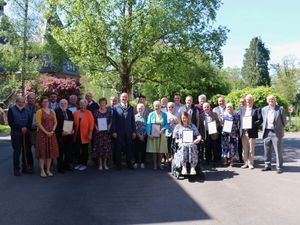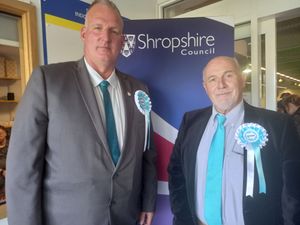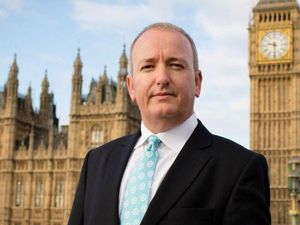Boundary changes agreed for Shropshire Council after 'totally inappropriate' plans dropped
Proposed changes to voting boundaries in two parts of the county have been dropped after being slammed as “totally inappropriate” by Shropshire Council.

Final changes to the authority’s ward map, published toda, reveal the Local Government Boundary Commission for England (LGBCE) has re-thought some of its draft proposals following strong opposition.
The new divisions will come into effect in 2025 and aim to balance out the number of voters between wards.
The LGCBE says each councillor should represent 3,595 electors, based on 2028 population predictions, with a tolerance of 10 per cent either way.
It will mean significant changes to accommodate housing growth in the Shifnal area, as well as expected population growth thanks to major developments planned at Tasley and the former Ironbridge Power Station.
The new arrangements will see the county split into 72 divisions, two of which will have two councillors while the rest will have one each, following a formal request from the council to move to entirely single-member wards if possible.
One of the most notable changes between the draft proposals published in May and the final report is that the village of Bayston Hill has been granted its own dedicated ward, in recognition of its “strong community identity”.
It means the village will be 22 per cent over the optimum number of voters, far exceeding the usual 10 per cent variance limit.
Currently, the village is lumped in with part of southern Shrewsbury in the county’s only three member division – Bayston Hill, Column and Sutton – but the draft proposals would have seen this link severed and the village instead joined with other communities to the south in a new two-member Burnell and Bayston Hill division.
However, after hearing strong arguments from the council, residents and local councillors, the LGBCE has been persuaded to break its own rules on voter numbers, known as ‘electoral equality’, to allow the creation of a standalone Bayston Hill ward.
The report says: “We acknowledge that it is wholly exceptional to propose a division with this degree of electoral inequality.
“We have carefully considered all of the evidence, and concluded that any attempt to place Bayston Hill in a two-member division, or to split off a significant portion of the village into a neighbouring division would… offer a very poor reflection of community identity, would not provide for effective and convenient local government, and would not offer the best available balance of our criteria.”
Consequently, Church Pulverbatch will be kept in the Burnell division after strong representations from locals against the suggestion that it be moved over to the Bishop’s Castle ward.
In Shrewsbury, Column and Sutton will have one councillor but will lose some of its population to the Abbey ward, and a new division named Oteley and Reabrook will be created.
Only minor changes will be made elsewhere in the town, though some wards will get new names. Bowbrook will expand to take in land earmarked for housing and will become Bicton Heath, while Sundorne will become Sundorne and Old Heath.
Elsewhere the Severn Valley division is to shrink geographically in readiness for an influx of new residents at Buildwas.
The whole town of Broseley will be brought into the Broseley electoral ward for the first time ever, with the Broseley Wood area being brought over from the Much Wenlock division.
The LGCBE resisted this in its draft proposals as it would mean taking the ward 17 per cent over the optimum number of voters, but the final report says it now accepts “strong evidence of community identity justifies this poor electoral variance”.
Some of the biggest changes will be seen around the Shifnal area, which the LGBCE says has “very poor electoral equality” due to the expansion of the town in recent years.
Currently two wards cover Shifnal and surrounding rural areas including Sheriffhales and Cosford, with another representing Albrighton and its hinterlands.
Under the final changes, the town of Shifnal will be split into two divisions with another covering just the village of Albrighton.
All the surrounding areas will come under a vast new division, named Shifnal Rural, which will also take in part of the current Worfield ward.
Concerns were raised about the plans for this area after publication of the draft report, but the LGBCE says no viable alternatives were put forward.
The report says: “While we understand that, in isolation, Shifnal Rural is a geographically large comprising a number of parishes the only alternative in this area would be to combine smaller rural areas with the urban areas of Albrighton and/or Shifnal.
“This would likely result in Shifnal having to be split between three divisions, or the village of Albrighton being split between two divisions in a way which would not reflect the community identity of these areas.”
Bridgnorth will be split into Bridgnorth West and Tasley, Bridgnorth Castle and Bridgnorth East. Astley Abbotts, currently joined with Bridgnorth East in a two-member ward, will instead come under Brown Clee.
Alveley and Claverley division is proposed to split, with the latter joining with Worfield. Alveley will come under a new Bridgnorth South and Alveley division, which will also take in Quatford and Quatt.
Cleobury Mortimer will be divided into two wards, with one covering the town and rural areas to the south and west down to the Worcestershire boundary, as well as taking Boraston from the current Clee division.
Meanwhile the new ward of Stottesdon, Kinlet and Hopton Wafers will take in villages to the north of the town.
Only minor changes are proposed in Ludlow to even out voter numbers.
Church Stretton and Craven Arms will be severed, with one councillor to represent each town and its hinterlands. The division covering Church Stretton, All Stretton and Little Stretton will be named The Strettons, after the council suggested the name as an alternative to the LGCBE’s proposal of Strettondale.
Chirbury and Worthen, which currently has too few electors, is set to expand to take in Westbury, which is currently in the Loton division.
In the north of the county, the LGBCE has abandoned plans to split the two-member division of Wem. The draft plans would have seen a single-member Wem ward covering the majority of the town, with a new ward called Wem Rural and Whixall taking in the surrounding areas, as well as a small part of the town to the south east of the railway line.
This would have left the town ward 10 per cent over the optimum number of voters by 2028, and the rural “doughnut-shaped” ward surrounding it 10 per cent under.
The final report says: “Given these numbers, and the strong evidence provided of a single community identity, we are persuaded to alter our draft recommendations, and depart from the principle of single-member divisions.
“We recommend retaining the existing two-member division, covering the whole of Wem Rural, Wem Urban and Whixall parishes.
“This division is forecast to have excellent electoral equality, and offers a better reflection of community identity than our draft recommendations.”
St Martin’s, currently represented by a single councillor, will expand to absorb other villages including Weston Rhyn, becoming the only other two member division in the county.
Gobowen and Selattyn will be represented by a single councillor.
The only significant change in Oswestry is the splitting of the two-member Oswestry East ward. Owestry West will be renamed Oswestry North.
Whitchurch will retain three councillors, but the two-member ward of Whitchurch North will be divided in two. Whitchurch South will expand to take in Ightfield from the Prees division.
Market Drayton West will split into two wards, and the boundary with Market Drayton East will also be adjusted to even out voter numbers. The East ward will be renamed Market Drayton East and Rural to better reflect the area it covers.
Publishing the recommendations Professor Colin Mellors, chair of the LGBCE, said: “We are very grateful to people in Shropshire. We looked at all the views they gave us. They helped us improve our earlier proposals.
“We believe the new arrangements will deliver electoral fairness while maintaining local ties.”
The changes will need to be approved by Parliament before taking effect at the next round of local elections in May 2025.




